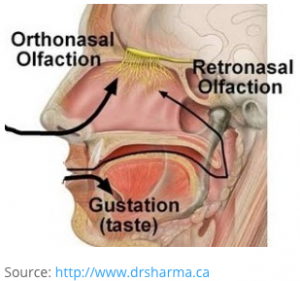Study shows some wine aromatics aren’t released until they meet the bacteria in our mouths
“At least 700 bacterial species live in our saliva, on our teeth and on all the interior surfaces of our mouths.
“For this study, sponsored by Spain’s Institute of Food Science Research in Madrid and published in the journal Food Chemistry, a team wanted to determine how big a role those microbes play in the detection of aromatic compounds in wine. Grapes are full of chemical compounds called aromatic precursors, which are not necessarily detectable to our noses until their structures are changed by a chemical reaction.
“But many [scents and flavors] don’t emerge until the wine interacts with our mouths. Much of a wine’s flavor is created by aromas we experience retronasally—we smell them as they rise to our noses through the back of the throat. The researchers wanted to know if oral microbes release these aromas.”
The study found that the mix of oral bacteria — the microbiota — varied from person to person. This means that perception will also change, making the taste very individual: and further eroding the ability for a individual to compare their experience to others — including wine criotics.
Finally, the retronasal experience is drastically altered between critics who sample and spit versus most of the world who swallow.
All these factors point toward the fatal flaws in traditional rating and selection systems.
